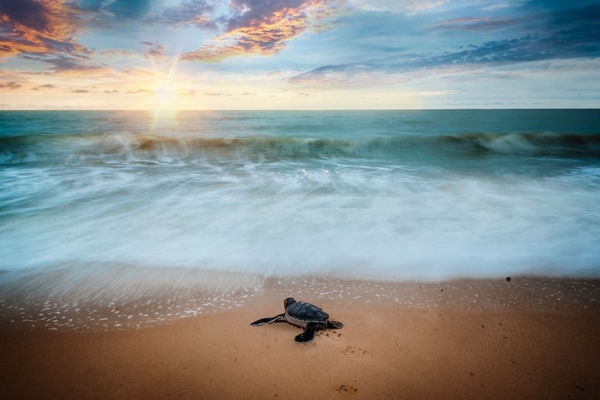
Northern Palm Beach County is a popular place for the Sea Turtle Nesting Season. Along the shore in Jupiter and Juno Beach, hundreds of sea turtles lie their eggs in the sand. The Loggerhead Marinelife Center in Juno Beach monitors the beach beginning May 1st through October 31st to provide care for the sick and injured sea turtles before releasing them back into the ocean.
The thousands of sea turtle nests that will be found along the beach usually contain about 100 eggs in each, requiring 45 to 60 days before they start to hatch. The reason why Northern Palm Beach County is such a popular sea turtle nesting spot is due to the gulf stream current that bends toward Florida, and the close proximity to the Sargasso Sea, a small region in the Atlantic Ocean.
A Sea Turtle’s journey is not an easy one. An estimate of 1 in 1,000 to 1 in 10,000 sea turtles survive and make it to full adulthood. Along the way, sea turtles encounter a lot of predators including other fish, fire ants, and humans. When on the beach, you’ll notice sections of the sand this nesting season blocked off by tape and barriers protecting the nests 3 feet of sand.
Greens, Leatherbacks, and Loggerheads are the three species of sea turtles that populate our area. This year, the Loggerhead Marinelife Center hopes to see a record-breaking number of sea turtle nests on our beaches.
Here are ways you can help:
Do:
Throw away any debris or trash left behind on the beach
Observe sea turtle nest from a distance
Fill in any holes with sand and help provide a clear pathway to and from the ocean
Do not:
Interact or disrupt sea turtle nesting’s – it is illegal
Bring or use balloons on the beach
Harm or Harass sea turtle, their nests, or hatchlings – it is illegal and sea turtles are protected by the United States Endangered Species Act of 1973 and the Florida Statute Chapter 370.



